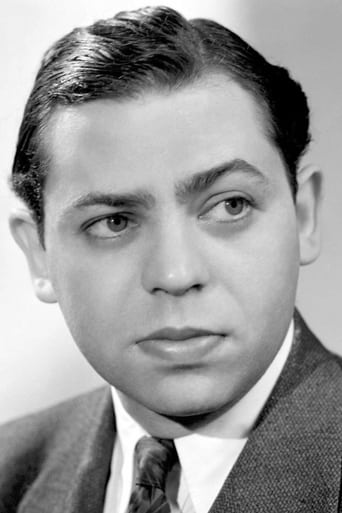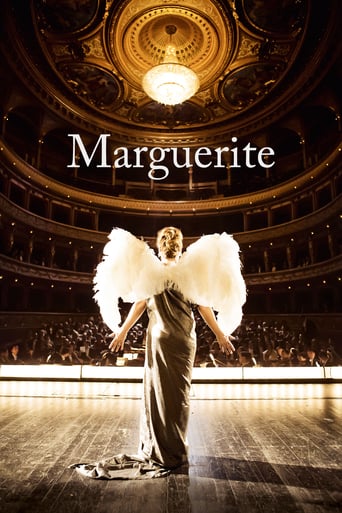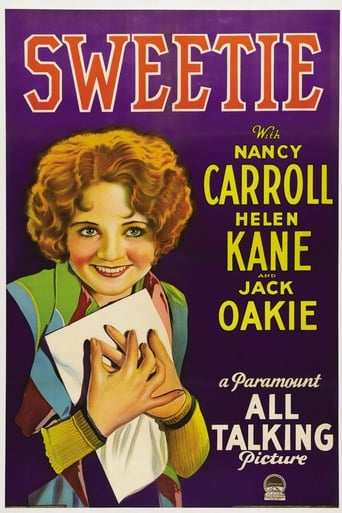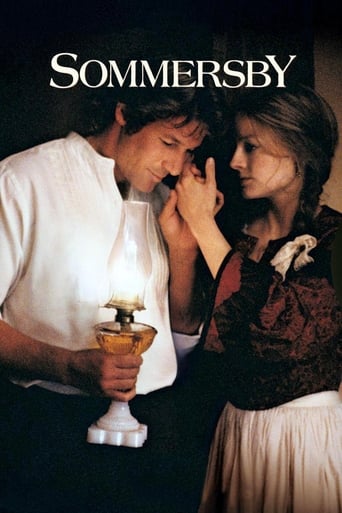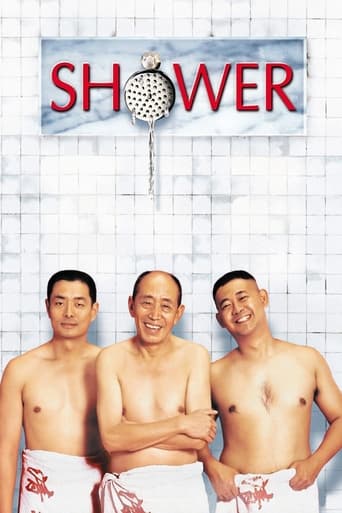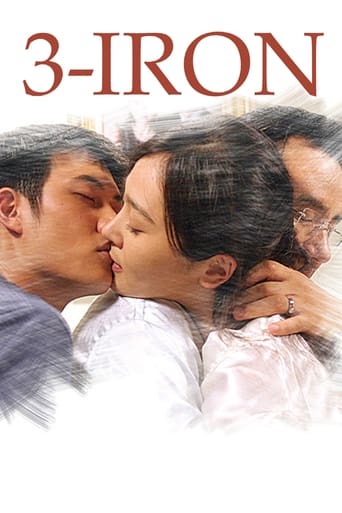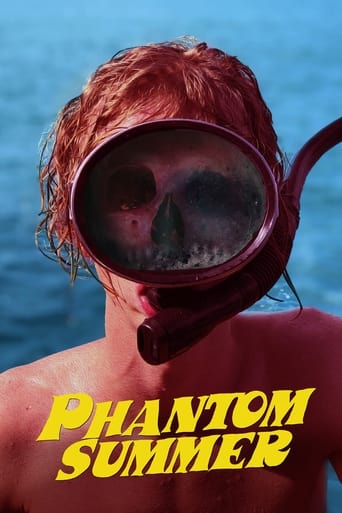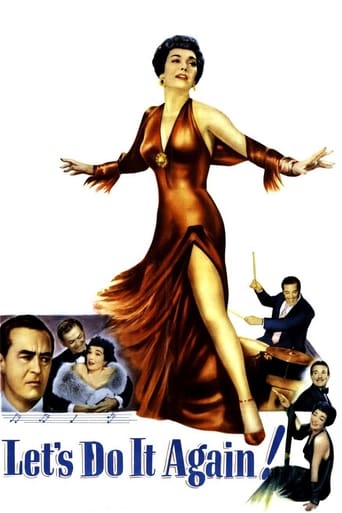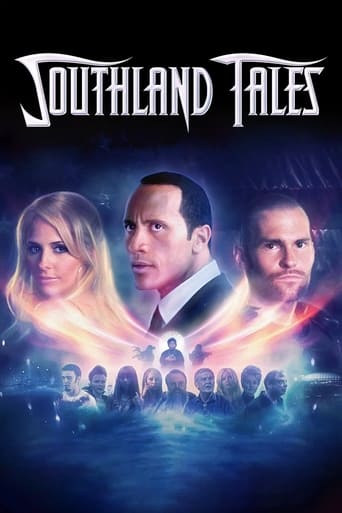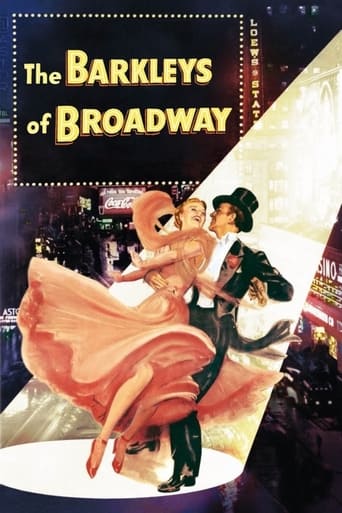
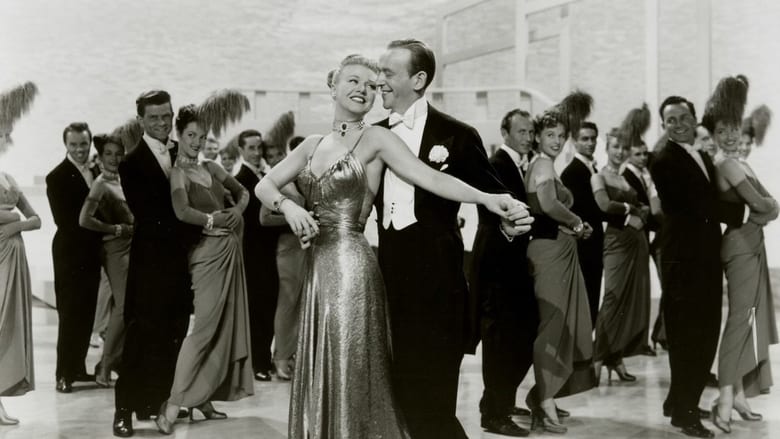
The Barkleys of Broadway (1949)
Josh and Dinah Barkley are a successful musical-comedy team, known for their stormy but passionate relationship. Dinah feels overshadowed by Josh and limited by the lighthearted musical roles he directs her in. So she decides to stretch her skills by taking a role in a serious drama, directed by another man.
Watch Trailer
Cast
Similar titles
Reviews
That was an excellent one.
In truth, there is barely enough story here to make a film.
This movie was so-so. It had it's moments, but wasn't the greatest.
One of the worst ways to make a cult movie is to set out to make a cult movie.
Tired of being part of their musical comedy song and dance team, Dinah Barkley (Ginger Rogers) decides to pursue a career as a dramatic actress, disappointing her hoofer husband Josh (Fred Astaire) which leads to their separation. But as much as he resents her for deserting him, he can't help but interfere in her career, calling her up with a disguised voice and pretending to be her director to offer her "acting advice". This turns her career as a dramatic actress around but leads to the possibility of romance between Dinah and Jacques, the director whom Fred had been pretending to be with a "Cyrano de Bergerac" facade. It's obvious that these two will get back together, but how the scam is exposed is all part of the fun.In their first movie together in ten years, Fred and Ginger appear as if time had stood still. He's gone onto other partners, and she's mixed an infrequent musical with mostly comedy or dramatic parts. For what was supposed to be a follow-up for Fred and Judy Garland (after the smash success of "Easter Parade") came as the reunion that nobody thought would ever happen, and one of the most delightful re-teamings in film history. You can see the story being a continuation of "Easter Parade"; Josh Barkley tells his wife that he helped her learn everything she knows, which having seen "Easter Parade" just recently is a perfect way to continue the story. But without Fred and Judy, there's no need to continue that story, and even if Judy had been Dinah Barkley (not Hannah Brown), the connections would have been obvious.Adding color to the Fred and Ginger pairing enhances their stardom, although I certainly wouldn't want to see their 1933-1939 pairings colorized. But you certainly need color for the "Manhattan Downbeat", "My One and Only Highland Fling" and "Shoes With Wings On", one of the most creative of all of Fred's masterpieces. Fred has a beautiful solo he sings to Ginger ("You'd Be Hard to Replace") and the reprisal of "They Can't Take That Away From Me" is elegantly staged. Ginger's singing in "Highland Fling" is a bit off key, but she still dances beautifully.Oscar Levant provides some acerbic dialog, but when he plays classics on the piano during a few concert performances, it is absolutely grand. His best line is a comment about Fred's replacement dance partner, Gale Robbins, and is one she totally deserves. Carol Brewster made my ears ring as Levant's dizzy date, but nothing put me in a bigger tizzy than poor Billie Burke's almost unnecessary contribution as a befuddled matron who may provide excellent parties but provided an annoyance even to her society friends who all seemed to run every time they heard her screeching out their names.When Ginger recites the French National Anthem (very over dramatically), she sounds like she's imitating Blanche Yurka in "A Tale of Two Cities", appropriate for Madame La Farge, but certainly hammy for a rising Sarah Bernhardt to expect to get away with at the "La Comédie-Française". But that's the only embarrassing scene here, with her rehearsals for her straight play very much done like Hepburn's scenes in "Stage Door" where she must face her inadequacies as a dramatic actress until it hits her how she has to play each scene. It's a shame that with each of their careers still in full swing that this was their last movie together. They did present an Oscar together only a few years later, and at any event where they were together, it was like Elvis or the Beatles had taken the stage. More than 80 years after their first appearance together, Fred and Ginger strike magic more than pretty much any other couple. He may have given her class, and she may have given him sex appeal, but together, they sparkled like the stars in the sky and still make cloudy days a lot better.
Well, looks like good ol' Nostalgia ruled the day on this viewing. I was wowed with their first color installment and mesmerized with the still beautiful Rogers. She was only 38 mind you but don't think she danced much for many years. The crazy shoe dance was fun trying to determine the special effects used and seeing Fred in a skirt was a hoot.I kept waiting for them to dance like they used to, face to face, but Fred held onto that cane for dear life. Could he not lift her anymore for that fabulous lift/twirl that immortalized the couple in "Swing Time" or maybe it was "Top Hat" or ??? Dang can't recall the exact title but you know the routine. However, in the last dance segment he did her a twirl with his back to the camera, a stand-in??? I enjoyed watching Oscar tickle the ivories in the Sabre Dance and Tchaikovsky's B Flat wild renditions. Sadly Dorothy was unavailable for the Wizard Dance but delighted to see my favorite dancers unite in harmony.High recommend for the last hurrah of the greatest duo of the thrillin' thirties musicals.
The couple Josh (Fred Astaire) and Dinah Barkley (Ginger Rogers) are successful musical comedy artists in Broadway and perfect on stage. However, they frequently argue with each other backstage and at home and the perfectionist Josh usually questions the performance of his wife. Their close friend and pianist Ezra Millar (Oscar Levant) usually calms them down.When Dinah is introduced to the playwright and director Jacques Pierre Barredout (Jacques Francois), he believes that she is a great dramatic actress and offers a lead role in his play to her. After an argument with Josh, Dinah splits up with her husband and decides to pursue the career of actress. The stubborn Josh misses Dinah and secretly helps her in her new career but none of them seems to give in."The Barkleys of Broadway" is another musical comedy with Fred Astaire and Ginger Rogers, but in Technicolor. This time, in addition to the beautiful numbers of Fred and Ginger, Oscar Levant wonderfully plays Tchaikovsky. My vote is six.Title (Brazil): "Ciúme, Sinal de Amor" ("Jealousy, Sign of Love")
The Barkleys of Broadway (1949)This is the last of the Fred Astaire/Ginger Rogers movies, and by now there is something familiar about it all. If this is your first exposure to the form, and to these famous two as the leads, it might disappoint you (thought it isn't half bad). But it's worth being specific: to those who are familiar with Top Hat or Swing Time (from the mid 1930s), this will seem like a visit with old friends, which is always wonderful, and to those who haven't seen Astaire and Rogers before, you might start with any of their 1930s films. Barkleys is a decent movie, terrific fun for the initiated, and with a carefree, fun, meaningless, playfully inventive plot. By now it is almost the 1950s, and the color (true Technicolor) as well as the flat, bright MGM filming bring another element to the approach. It's not engrossing, I think, but that's fine, too. There is no pretense at all.All of their musicals have clever, often romance based plots, and these events are part of the escapism. It isn't uncommon to have the leads play characters in show business, so there is a second layer of references to acting and dancing. By the way, Rogers and Astaire can act as well as dance. Luckily. Most of the movie isn't dancing at all. The relationship between the two leads, now utter legends (they are married in the film, but the actors were never, apparently, in a relationship offscreen) is superbly comfortable. They squabble and kiss, argue and harmonize, and dance and sing convincingly. There are few couples like this in the movies--Hepburn and Tracy, Loy and Powell--and even though this is a fantasy genre (the musical), Rogers and Astaire come off maybe the most convincing of all. The dancing is on level of its own, and it hardly needs mentioning, except that a couple of the numbers are great, and great fun. Be patient--the first one doesn't start until almost half an hour in. Sometimes the singing is so dated it will strain a viewer not used to it (it strains me, and I'm used to it). But I actually have come to love Astaire in particular for his unique flavor (ignoring the painful Scotland number). A more classic tap dance by Astaire (alone) pops up at 57 minutes, and it adds an odd non-diagetic layer of Astaire's voice singing (he is not singing or lip synching in the scene). Then, adding to the invention of the scene, a couple pairs of shows show up and start dancing with him (just the shoes), and then a bunch more, until it is practically a Disney animation. This was unusual for Astaire partly because it has no segues with the plot--it's just an insert.You might notice the Gershwin credit for the music, but you might be thinking of composer George, who died in 1937. The lyrics are by older brother Ira, the music by Harry Warren, except one piece, "They Can't Take That Away from Me," which George and Ira wrote in the 1930s (and which Astaire sang to Rogers, without dance, in the 1937 Shall We Dance). I think it is reprised here for all those in the audience who were watching (in 1949) for purely nostalgic reasons. It had been a decade since the pair had danced together, and this old number is like a time machine. The dancing ("ballroom" style on an empty stage) is nothing to write in your diary about, however.One fun addition, purely musical, is Oscar Levant at the piano, which leads to some music straight ahead. And not faked (he was a true pianist). The scenes don't advance the plot, but they make it a musical in another sense.


